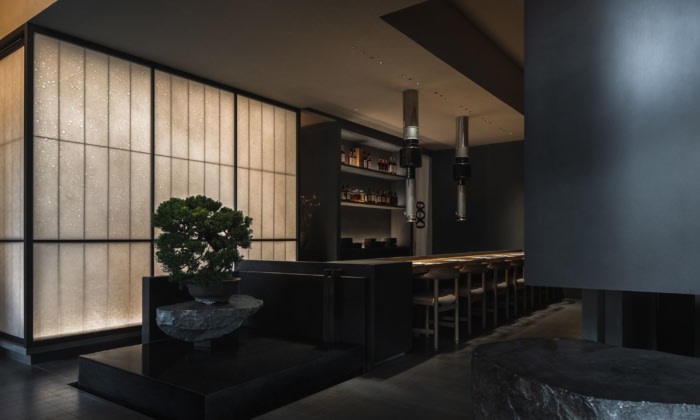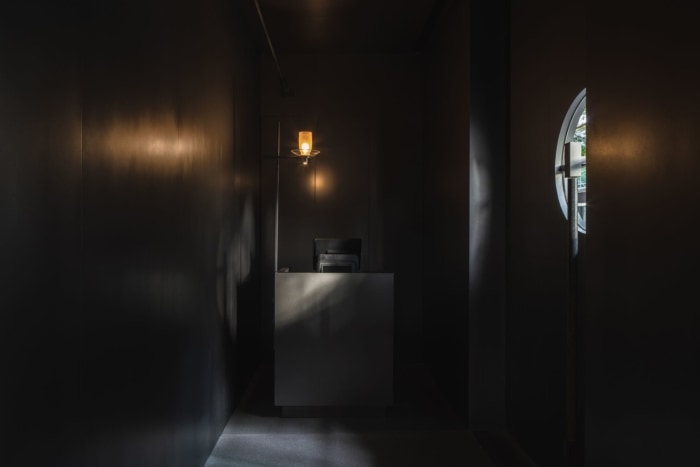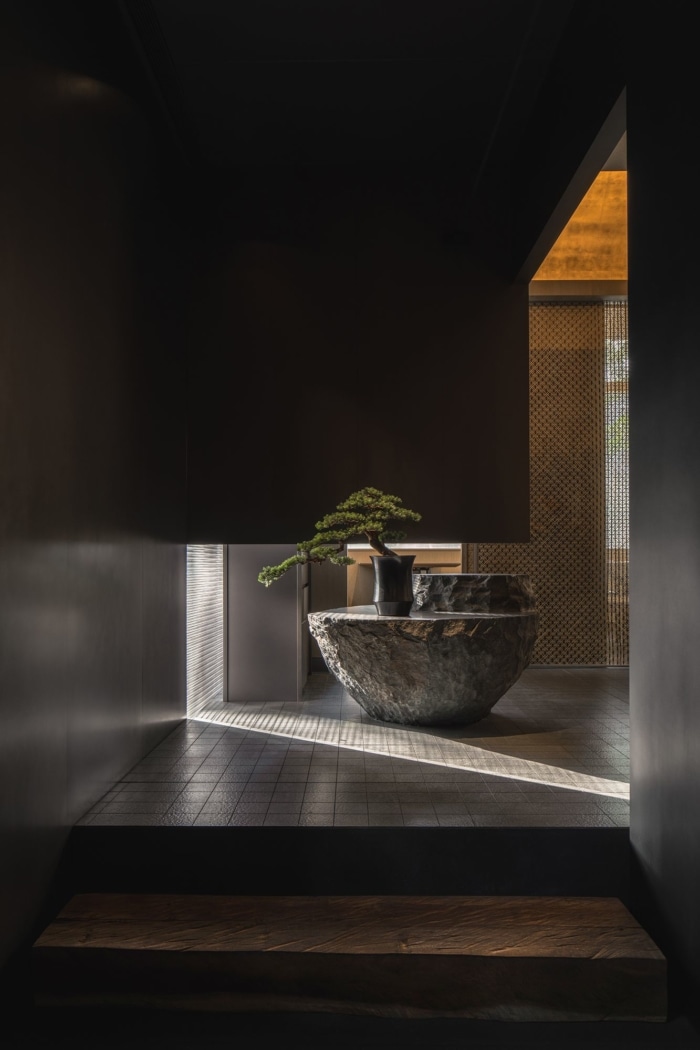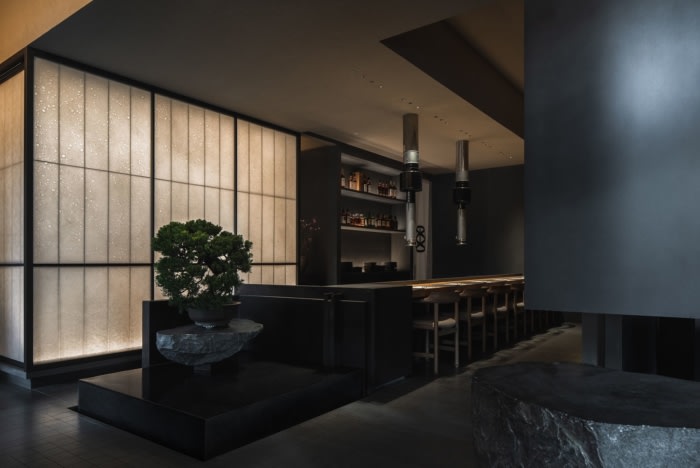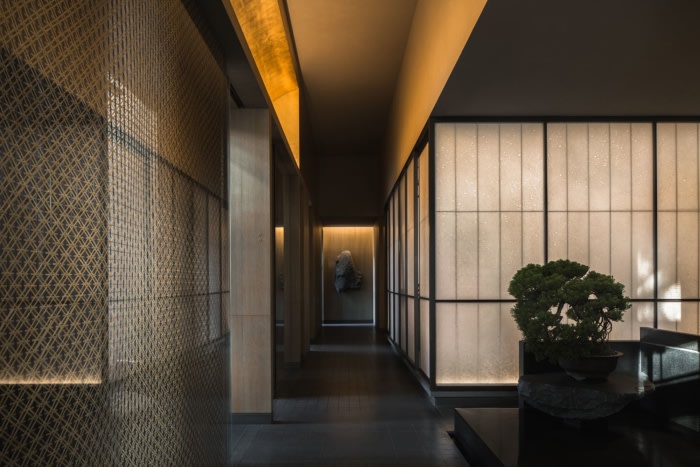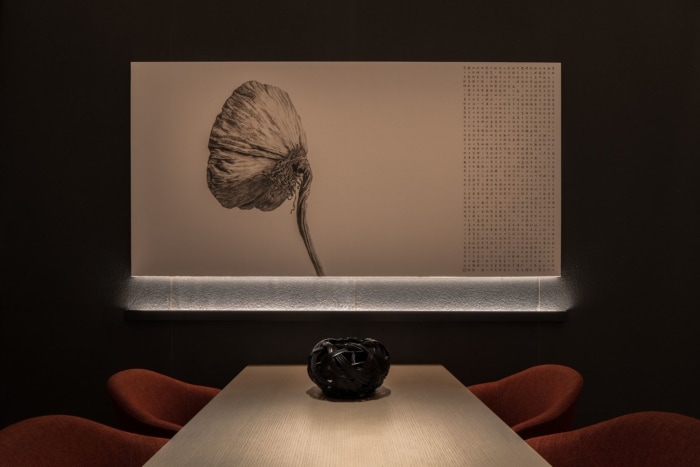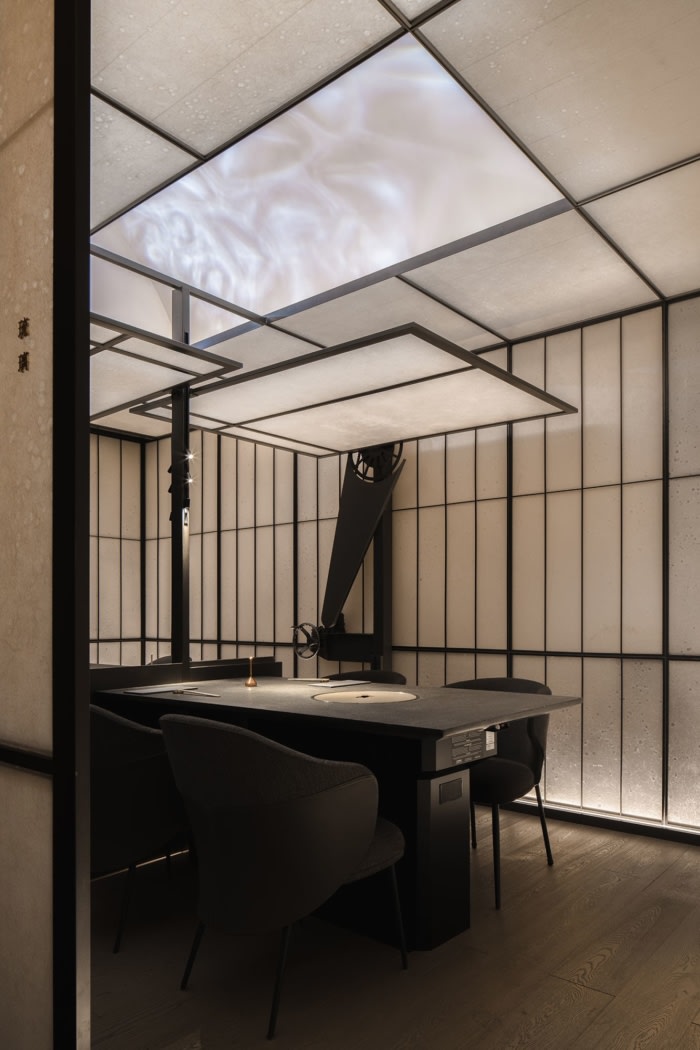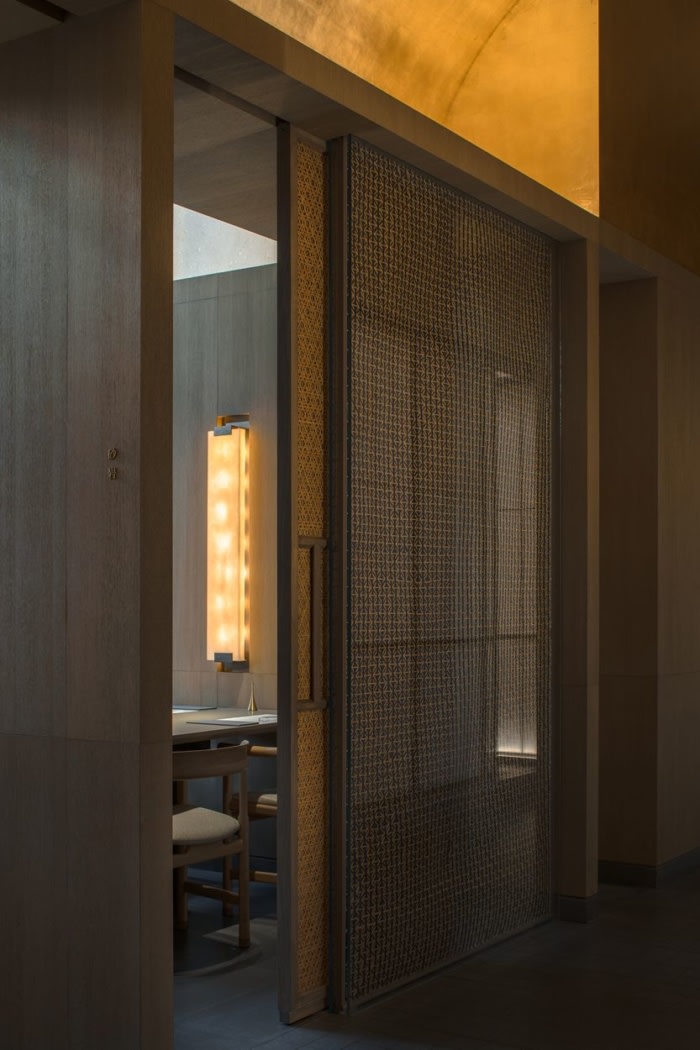Ember Restaurant
NATURE TIMES ART DESIGN utilized strength, darkness, and warmth with every selection of material, color, and piece of furniture at the Ember Restaurant.
Charcoal grille wagyu represents the essence of Japanese traditional cuisine and incorporates aspects of Korean, American, and other cultures’ new styles of modern cuisine. Japanese barbeque (yakiniku) master Kentaro Nakahara perfects his craft in Tokyo, and has created his own exclusive menu of omakase yakiniku dishes that has been praised as the “Hermès of the barbeque world”.
This project is his third restaurant globally that features this particular menu. Located in Shenzhen’s central business district, it promotes the values of exquisite cuisine and the master chef’s craftsmanship. Based on the deep understanding of the brand’s essence, the design team conceived the restaurant in exactly the right way, with the expectation of conveying its modern Eastern spirit that exemplifies its presence in a globalized era.
The restaurant hides under a skyscraper in the clouds and is concealed within a densely layered glass wall. Its logo pattern is shaped like the character yan that resembles a Japanese family crest, showing a low-profile presence from the storefront’s glass door and echoing the tree shadows. The natural greenery and the urban background of reinforced concrete create a mysterious and futuristic atmosphere.
A black wall connects with the glass curtain wall. It abandons any fancy patterns or textured decorations, only with a gold and bronze-colored logo on it, to remind passers-by this place’s fine cuisine and world of yakiniku hidden behind the steel panels.
Continuing the low-profile facade image, the reception area is quiet and dark, lit with a single warm and softly shining light. Diners are seemingly entering a private residence with a dense and static atmosphere that creates an emotional prelude for the immersive scenery and experience.
The interior space differs from the ostentatious and chaotic ambience of most yakiniku restaurants, as it combines an Eastern wabi-sabi aesthetic with traditional Japanese tatami rooms. Floor, walls, and tabletops are clad in gray stone materials. The space is decorated with semi-transparent gold screens and roughly-textured steel panels. These complement the wood veneers, fabrics, natural rattan and other warm textures embellishing the restaurant.
The urban spatial fabric composed of criss-crossing streets and alleys are applied to the restaurant’s spatial layout. Various functional spaces such as booths, bar counter, drink room, and private dining rooms are organized to meet customers’ diverse needs. In the meanwhile, the spatial pattern also takes consideration into privacy.
Different functional spaces are decorated with different materials including gold foil, metal coatings, fabrics and wood grain, to create varied ambiences. The private dining rooms can be freely opened and closed, recalling small shops along Tokyo’s streets. The ceiling structures of those rooms can be raised and lowered to simulate the sky, which imbues the space with a sense of nature and a dynamic spatial aesthetic.
The warm light reflected by the gold foil beautifully complements the white light reflected off the textured glass, together creating a rhythmic match of light and shadows.
The Zen waterscape and bonsai, irregular and unpolished stone sculptures as well as minimalistic ink-wash paintings emphasize the experience of an escapist mindset and concealed world. Subtle decorations and art pieces are interspersed with the space based on composition techniques of separating view, borrowing view and framing view.
Beside the bar counter there is a concise yet powerful thick rock slab, with a lush pine bonsai placed on it. Objects in the space are touched by light and shadows, and carries the traces of time and a sense of warmth, hence endowing the space with a poetic yet lively atmosphere and natural vitality.
Design: NATURE TIMES ART DESIGN
Design Team: Wei Jinjing, Wei Yaocheng, Zhang Huichao, Xie Gang
Photography: HereSpace

